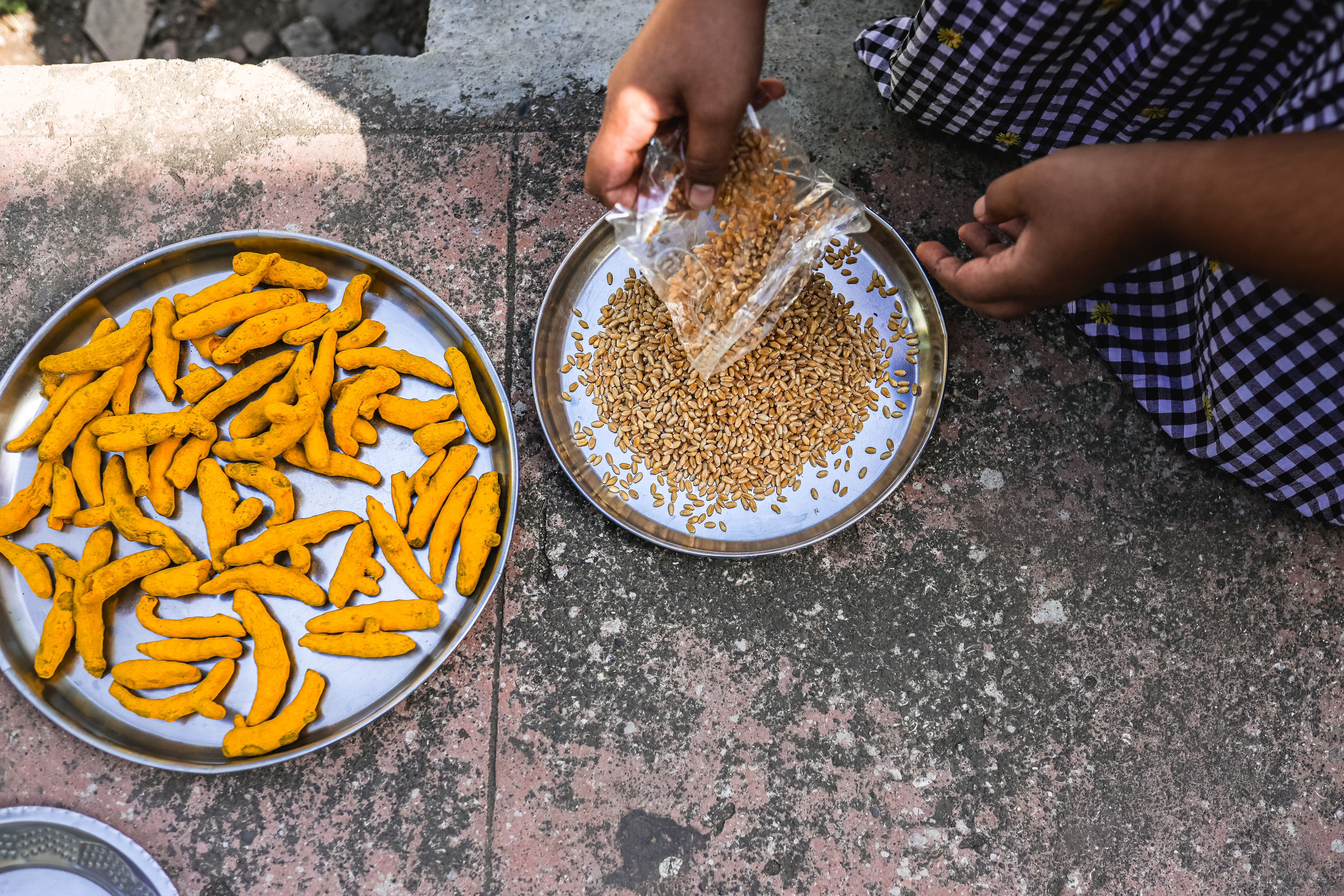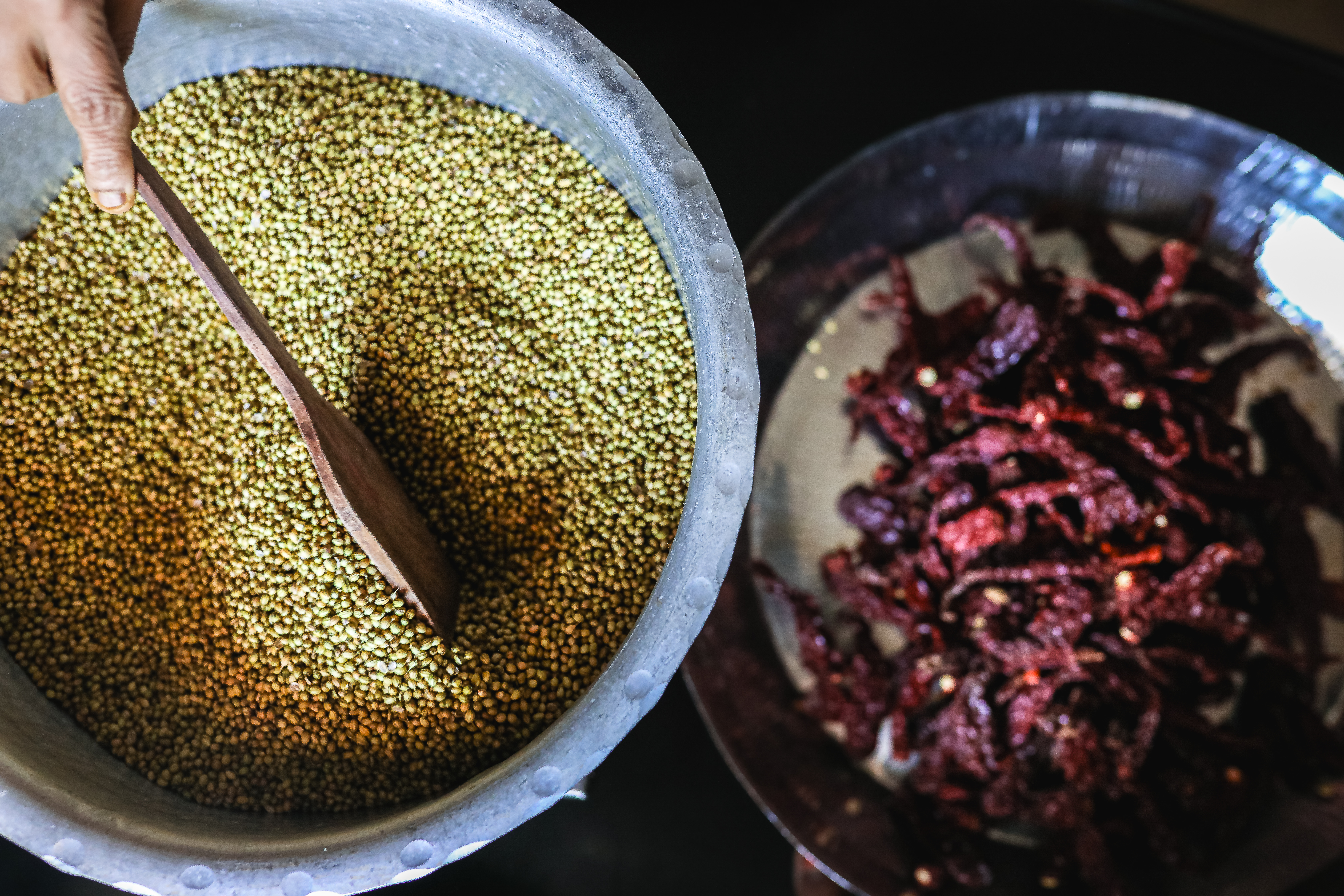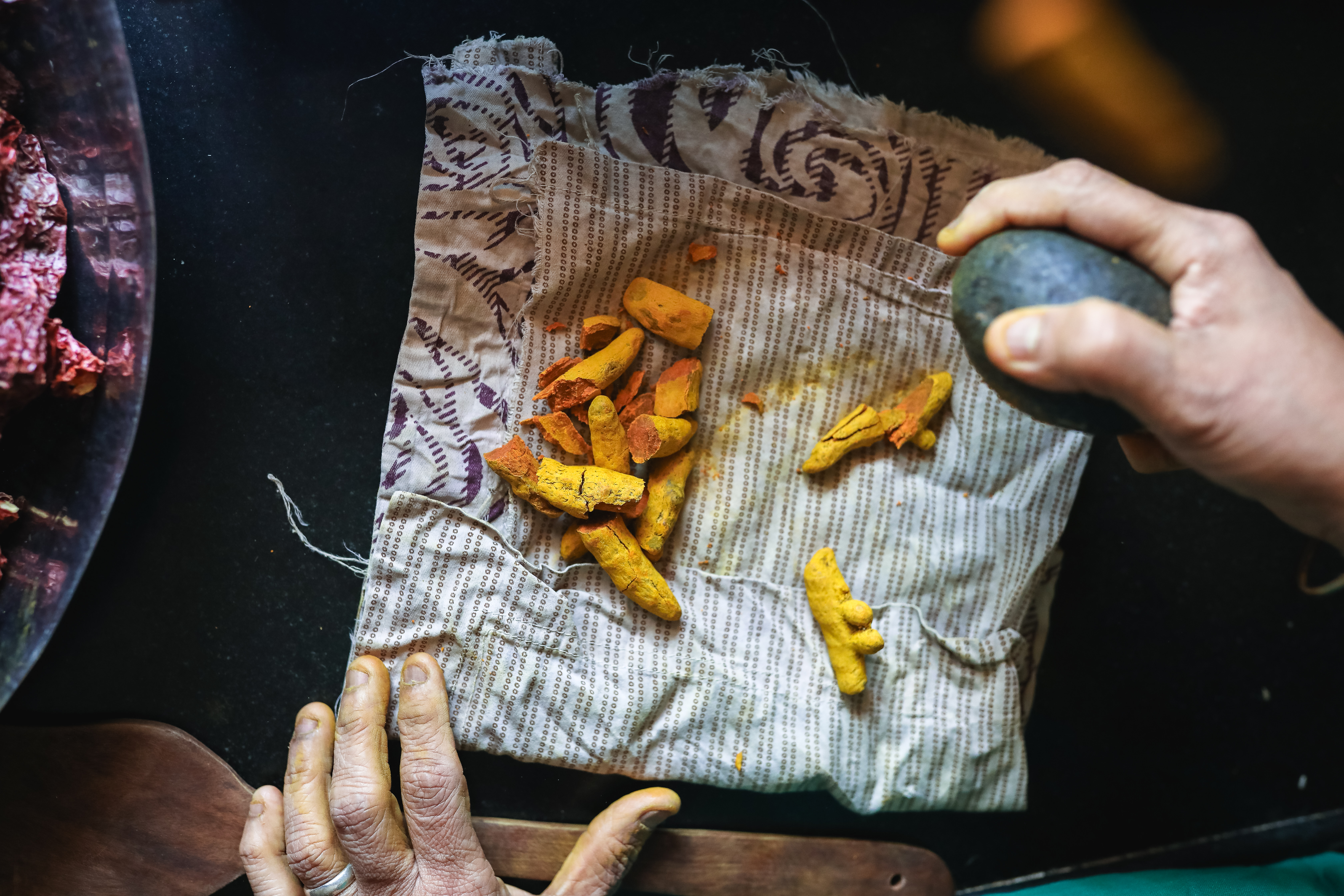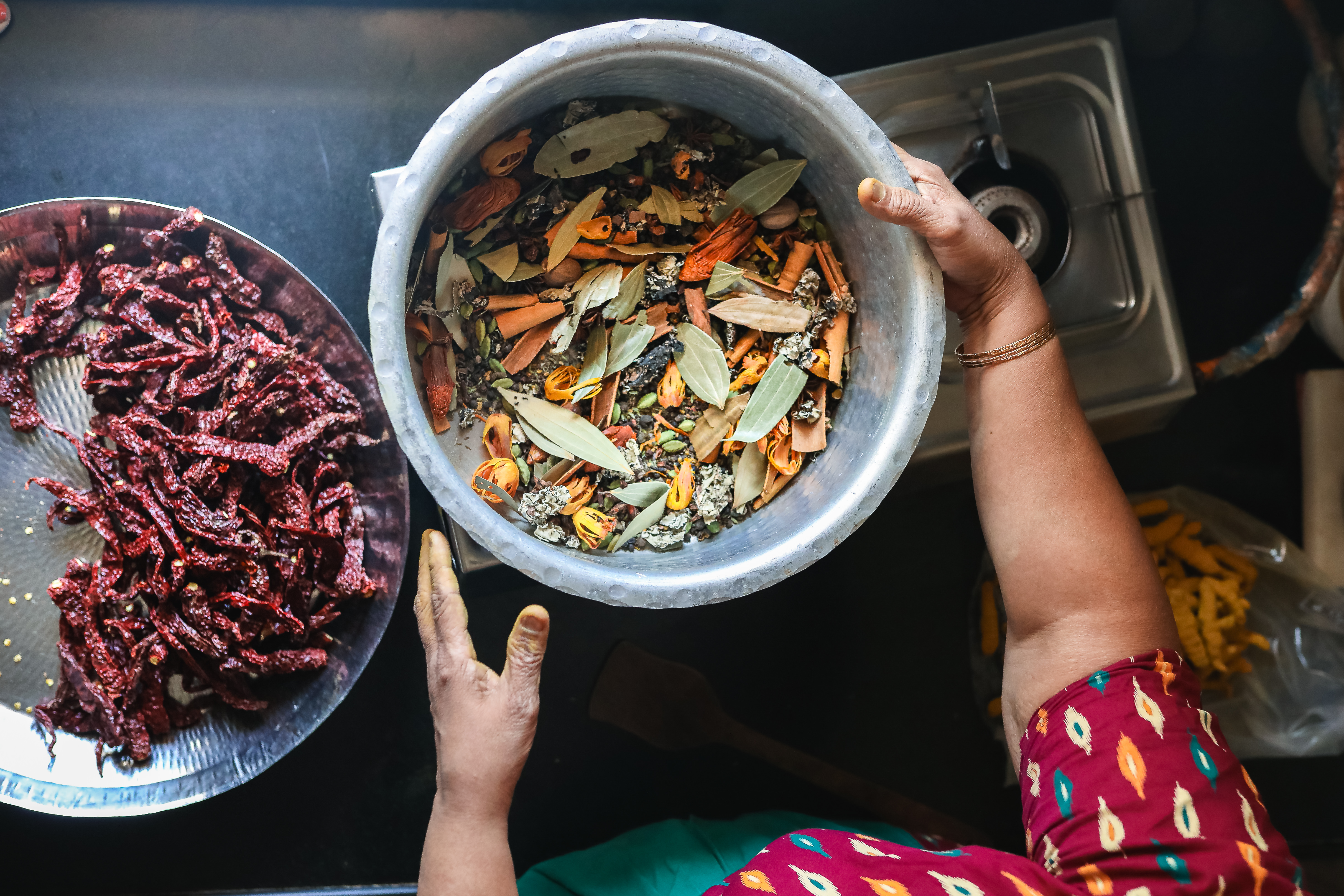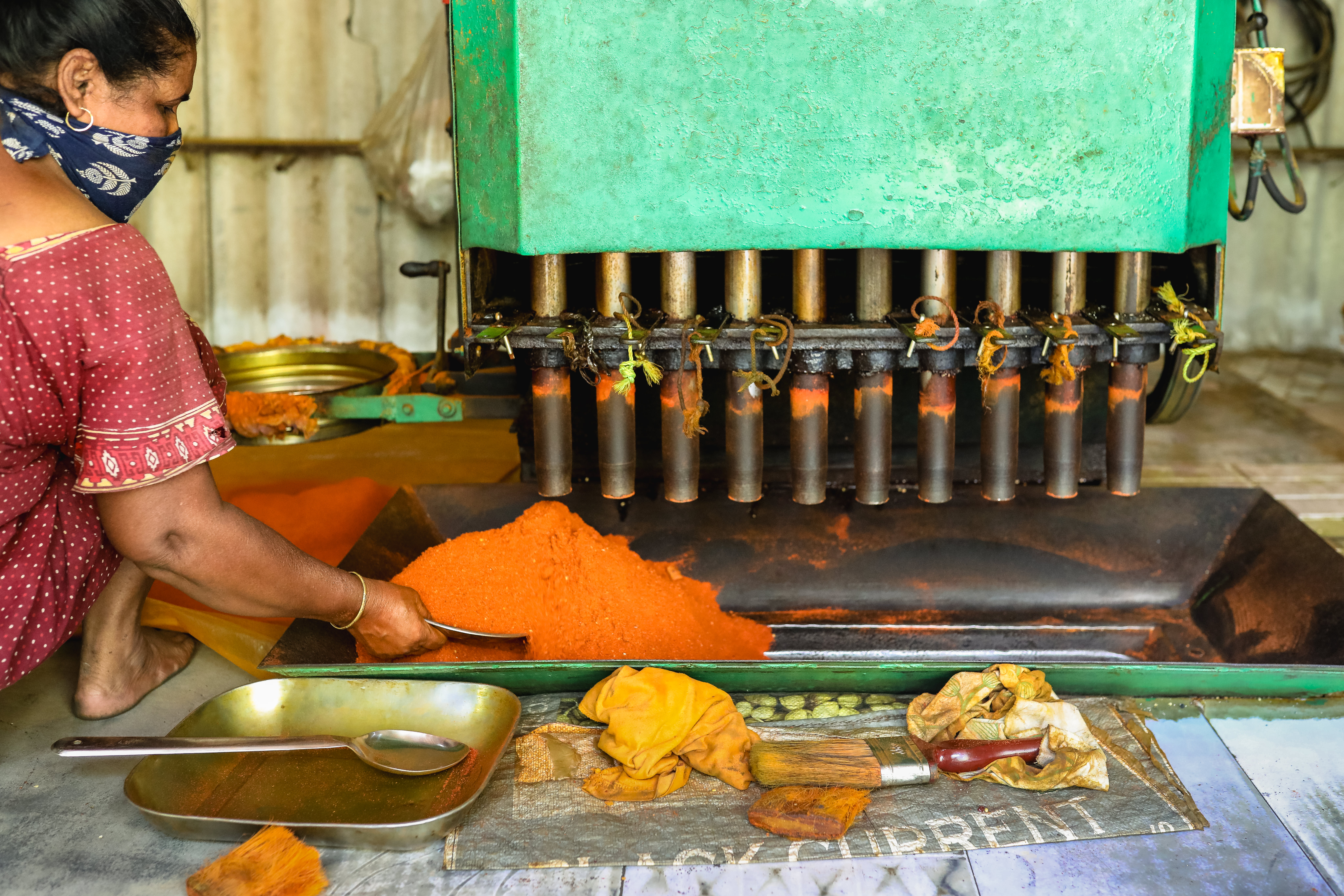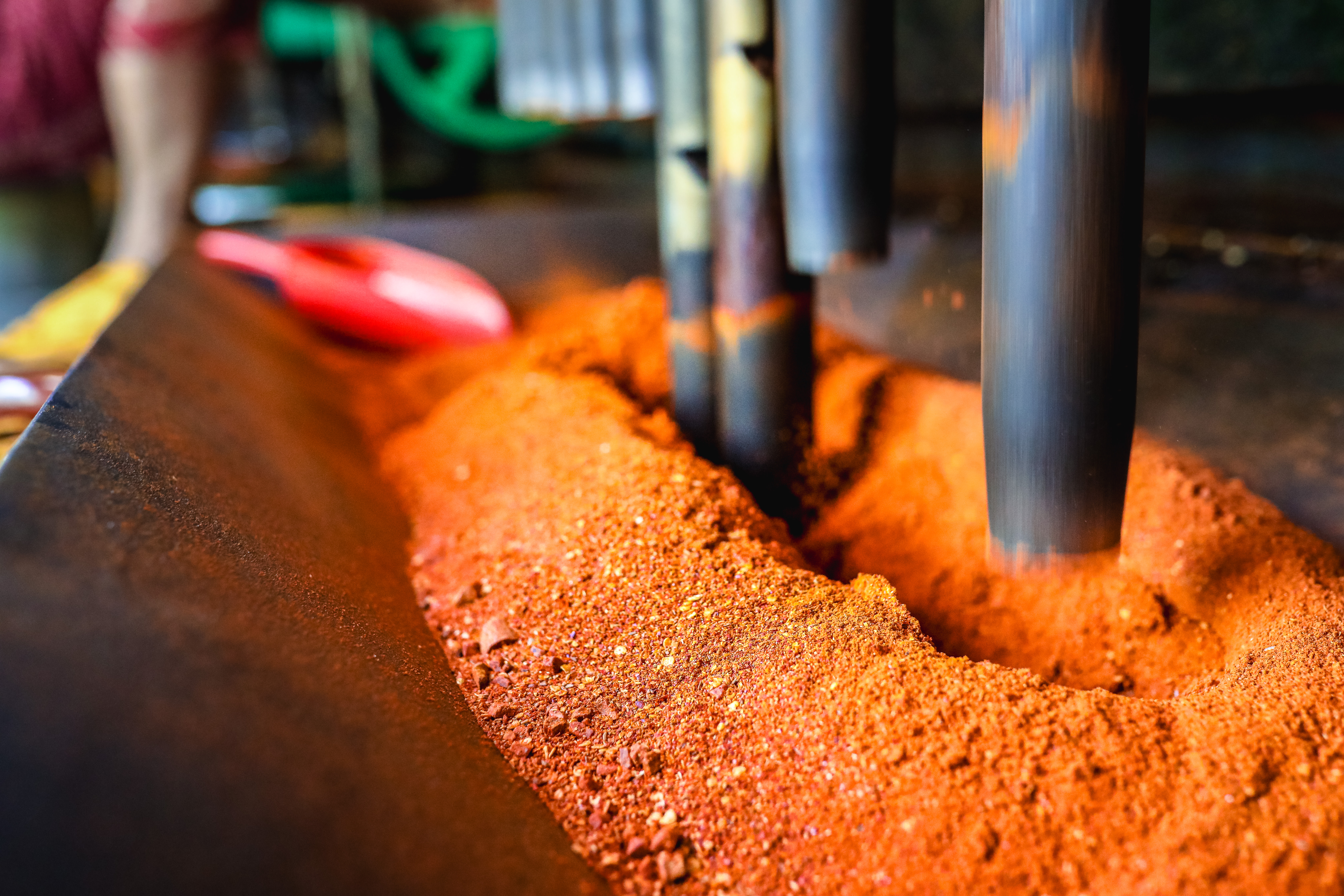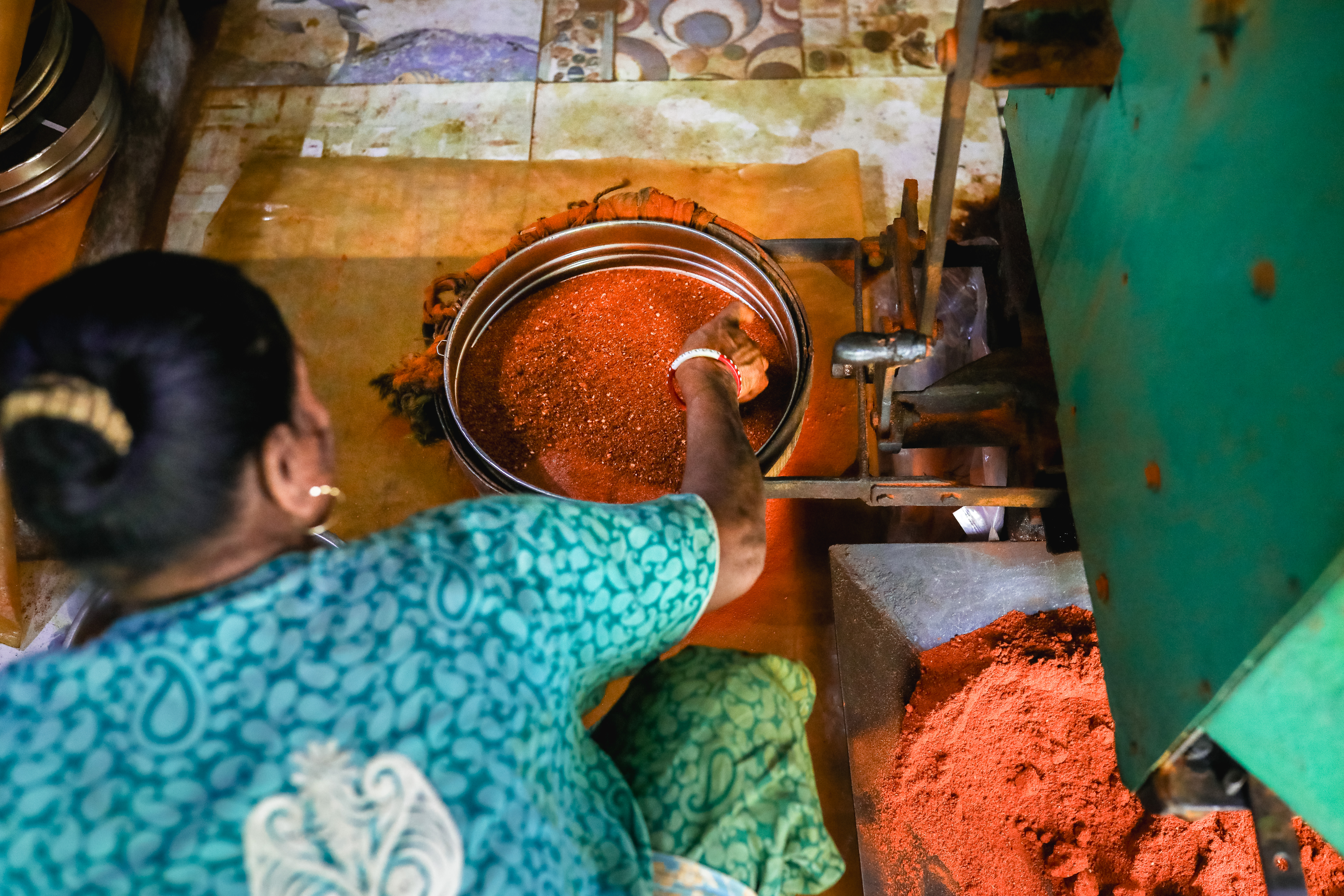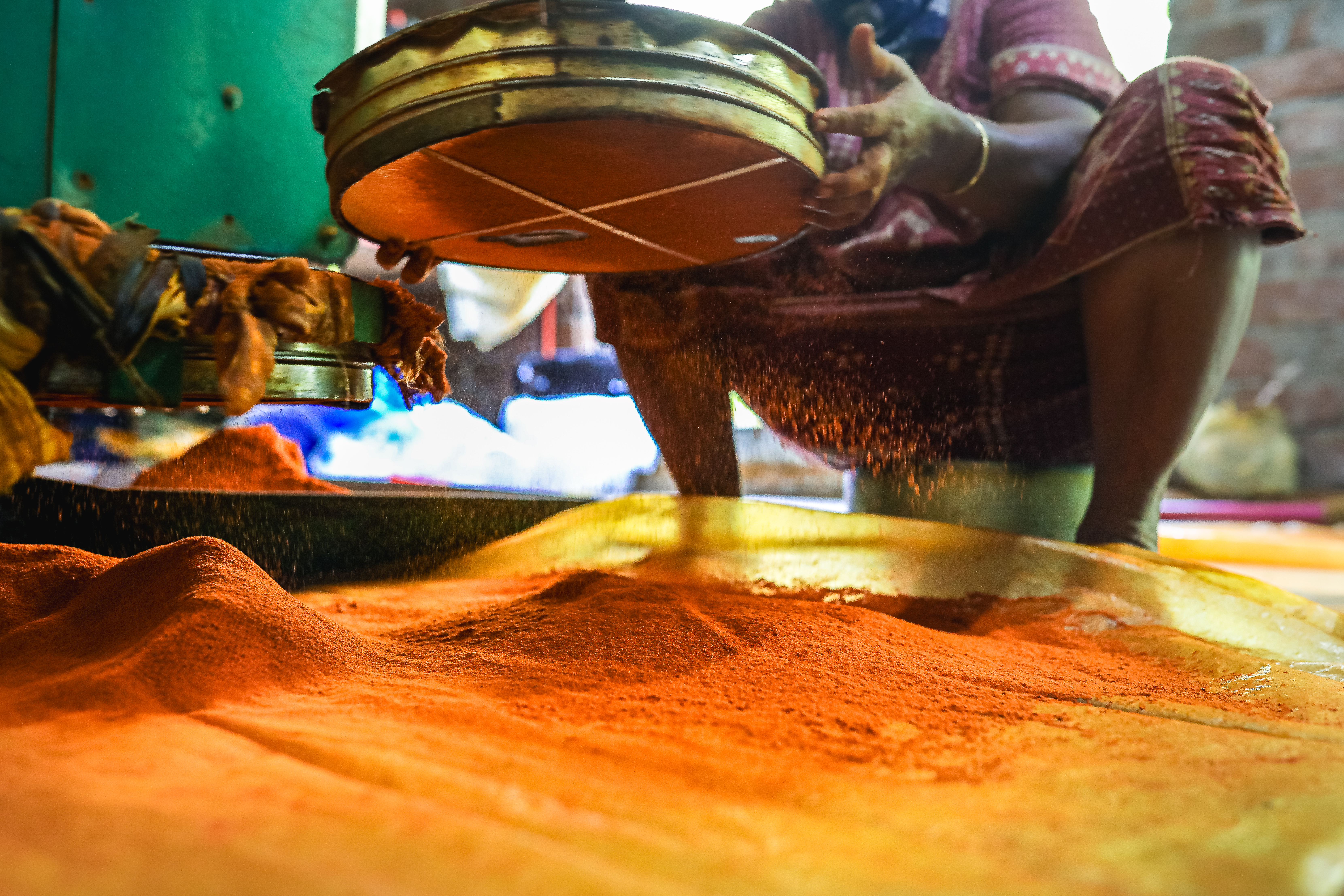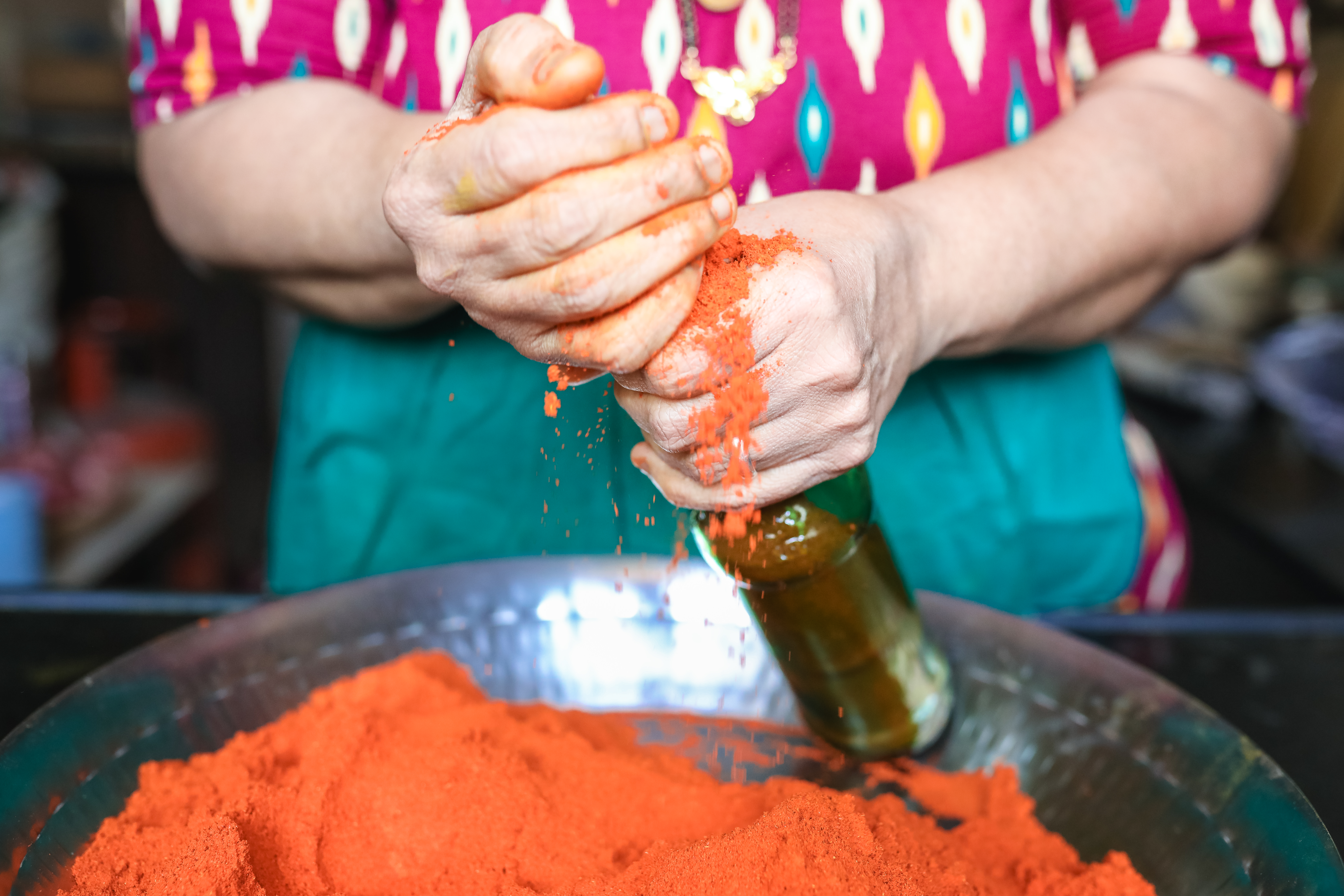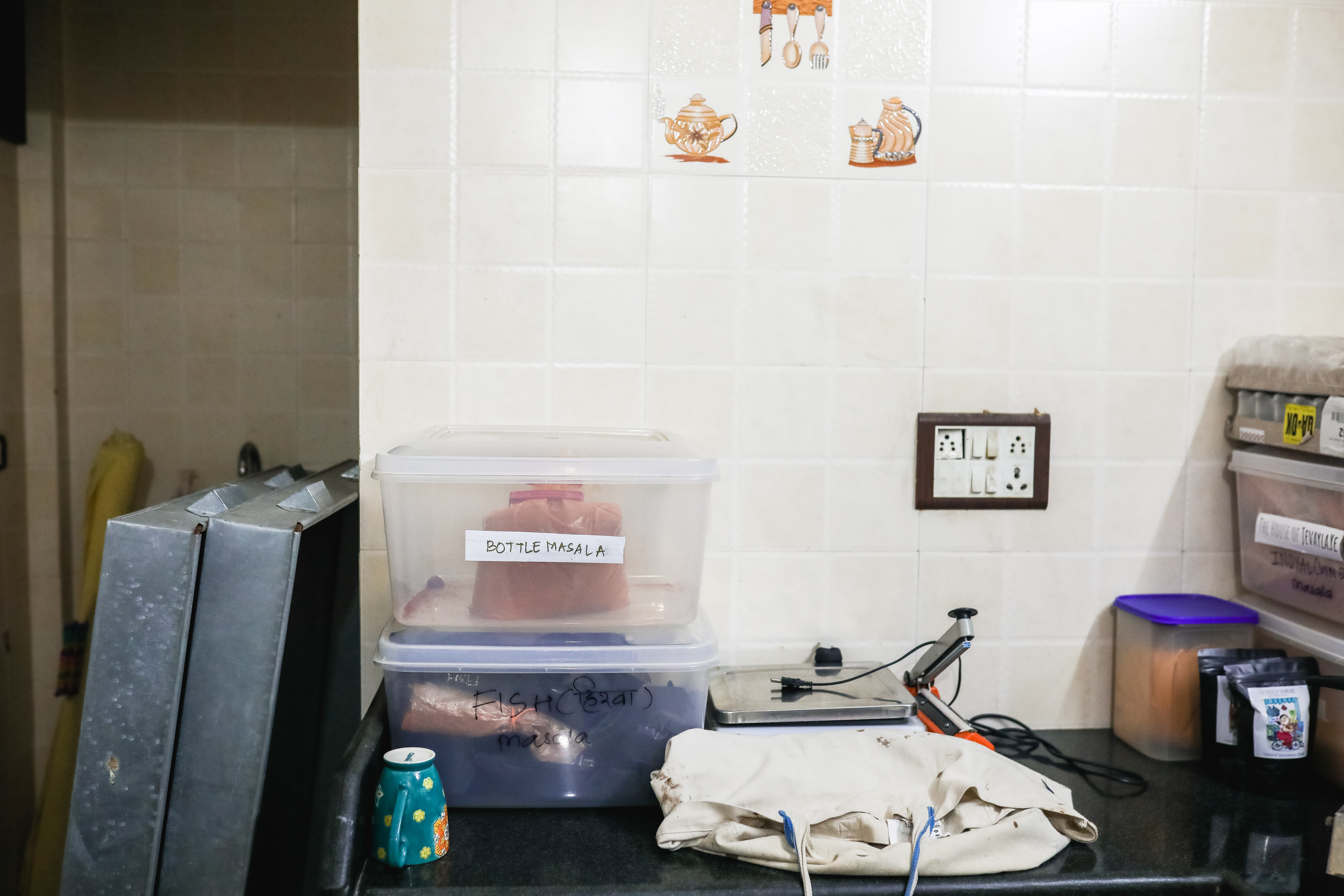Hot and Spicy: The East Indian Bottle Masala
In 1492, a pioneering navigator set sail from Palos de la Frontera to find an alternative sea route to India, bypassing the Ottoman Empire, which had blocked the old route to India via the Mediterranean Sea and the Red Sea. This explorer was Christopher Columbus, a Genoese who, after years of lobbying for financial support, had finally convinced the Crown of Castille (Spain) to invest in his westward voyage across the Atlantic Ocean, a navigational feat never attempted before. In 1492, on his first voyage, Columbus landed in the islands of the West Indies, convinced he had discovered India (which he had not). Successive voyages by Columbus and other explorers like Amerigo Vespucci, John Cabot, Joao Fernandes Lavador, and Pedro Alvares Cabral led to the discovery of North and South America, collectively known in Europe as the New World.
The Aztecs ruled Mesoamerica before the arrival of Europeans, characterized by their highly developed social, political, and religious systems. The Aztecs were also known for their advanced agricultural practices; they had domesticated crops unique to the region, including maize, beans, tomatoes, potatoes, squash, and chilli peppers, among many other spices, fruits, and vegetables. The discovery of the New World led to the widespread transfer of plants, animals, culture, human populations, technology, and ideas between the New World and the Old World (Europe, Asia, and Africa). This transfer, known as the Columbian Exchange, profoundly impacted both the Old World and the New World, leading to significant cultural, ecological, demographic, and economic changes. The Columbian Exchange facilitated the transfer of crops and animals that were previously unknown in the Americas and Europe. For instance, the Columbian Exchange introduced crops like maize (corn), potatoes, tomatoes, and peppers to Europe, and brought wheat, barley, rice, and sugarcane to the Americas.
King Manuel I of Portugal backed Vasco da Gama, aiming to challenge Spain in the race to colonize the New World and spread Christianity. Unlike Columbus, who had set sail westwards, Vasco da Gama followed a different route, going south to reach the southern tip of Africa, a route first charted in 1488 by the Portuguese explorer Bartolomeu Dias. Rounding the Cape of Good Hope, Vasco da Gama reached Mozambique (which became a Portuguese colony), Mombasa, and finally Malindi, from where he set sail for India, arriving in Calicut on May 20, 1498.
In subsequent expeditions, the Portuguese quickly established their naval supremacy along India’s western coast and gained control of maritime trade in the Indian Ocean region. They captured Goa from the Bijapur Sultanate in 1510 and acquired more territories in Gujarat, Maharashtra, and the Konkan through the Treaty of Bassein (1534), signed with Bahadur Shah, ruler of the Gujarat Sultanate. The treaty allowed the Portuguese to establish control over the seven islands of Bombay, where they actively promoted the conversion of the native population to Catholicism. Intermarriage between the Portuguese and Indians resulted in a mixed community of native Christians, who, in later centuries, identified themselves as East Indians.
The Portuguese colonization of India influenced Indian eating habits by introducing new vegetables, fruits, and spices from the New World as part of the wider Columbian Exchange. These exotic crops arrived in Goa via the Portuguese colonies in the Americas and Africa. New spices also reached India from the Maluku Islands in eastern Indonesia, which, at the time, were the only known sources of nutmeg, mace, and clove in the world. From their base of operations in Goa, the Portuguese captured the Maluku Islands in 1511, from where they shipped nutmeg, mace, and cloves to India. The new spices gained widespread acceptance in the existing Indian spice palette, which already had a global reputation.
It is inconceivable to think of Indian cuisine without a dash of chili or clove, spices that were once alien to the Indian subcontinent but have become an integral part of its gastronomy. Due to their Portuguese origins, it is unsurprising that the East Indian community is famed for spicy dishes. If you have lived in Mumbai long enough, it is hard not to have come across East Indian cuisine, which, over time, has adapted itself to reflect a mixture of Portuguese, British and Maharashtrian culinary influences. A potent masala, colloquially known as bottle masala, prepares from a variety of exotic spices and is essential to the aroma and taste of East Indian cuisine. The name originates from the empty beer bottles used to pack and store the masala, ensuring it remained airtight and fresh. East Indian community kitchens use the masala as a staple in preparing various dishes.
Drying is the first step in the preparation process, which begins in March when temperatures begin to rise. The spices are laid out on the street or on rooftops, exposed to sunlight for two to three days. Chillies bought from wholesalers tend to retain some moisture, and they must be thoroughly dried until they are crisp and crunchy. Once dried, the spices are roasted whole. In the past, in East Indian neighbourhoods like Vasai (Bassein), it was common to find groups of women (called masalewalis) going from house to house to do this task. Employers hired them to roast the spices on an outdoor stove and then manually pound them with a mortar and pestle, a task that required several days of collective effort. Today, mills, equipped with specialized machines, perform the labor-intensive and time-consuming pounding process much more quickly. For example, 1–3 kg of masala can be ground in a mill in 4–5 hours. The powder is sieved to remove lumps and pounded again. This process is repeated several times to ensure a smooth blend and fine grains. The blend is then packed in airtight containers, which have largely replaced bottles. Bottles do remain in use occasionally though.
The recipe for making bottle masala varies from household to household and may include a mix of 25–60 different spices. Kashmiri chillies, which give the masala its signature pungency and deep red hue, form the base of the masala blend. Kashmiri chillies are mixed with Teja, Resham Patti, and Bedki, among other chilli varieties. Staple spices from the Indian kitchen, like cumin seeds, coriander seeds, clove, cinnamon, cardamom, peppercorn, turmeric, mustard, and poppy, are also added. The mix also includes rare spices such as mugwort, stone flower, and cobra saffron.
The skill of a mixer lies in measuring the exact proportion of each spice, which creates its distinctive flavor and aroma. Mastery of the recipe takes years of skill, experience, and practice. Ask any matriarch of an East Indian family for the exact recipe, and you will find it to be a closely guarded secret. The family passes down the recipe, from the mother to the daughter to the granddaughter, through hands-on experience in the making process. This generational knowledge is entirely intangible, with no cookbook or written source. In the old days, family members would come together for several days to prepare the masala. This fostered a sense of collective collaboration, thereby reinforcing the bonds that tie the East Indian community together.
Due to a variety of reasons, the popularity of bottle masala has declined over the years. Consumers now prefer to buy ready-made masala from the market instead of making it at home. Veera and Natasha Almeida, a mother-daughter duo, have preserved the art of bottle masala by running the popular Instagram page @Jevayla_Ye (89k followers) and 'The House of Jevayla Ye' page on Facebook, where they share East Indian recipes and techniques from their kitchen. Together, they run their family business, selling bottle masala, fish masala, pickles, and dried fish, among other homemade recipes that are much sought after by cooking connoisseurs.
Literally translating to ‘come eat’ in the East Indian dialect, Jevayle Ye has been a boon to many East Indian families who, for various reasons, cannot invest the time needed to make masala at home but still want to use homemade spices. ‘Unlike other masalas, bottle masala doesn’t overpower the dish and therefore is extremely versatile,’ says Natasha Almeida. Though various factory-made spice blends exist on the market, bottle masala remains uniquely East Indian and holds a special place in the East Indian community as a symbol of their culinary tradition and heritage.
Making of Bottle Masala:
Typically, one would purchase spices from wholesale marketplaces selling dried chillies. The masala's bright red colour and pungent flavour are derived from Kashmiri chillies used to make the base, though other varieties may also be used.
Spices purchased at wholesale markets are sun-dried for two to three days to remove moisture. This usually happens once a year during the summer. After the rainy season ends in October, some households may decide to make another batch of masala.
Spices are laid out for drying in the courtyard of Marthahil, a heritage home at Vasai that has been the residence of an East Indian family for more than 150 years. The masala-making season usually lasts from March until May. Earlier, drying spices in the open was a common sight in East Indian neighbourhoods, though the practice is declining as people nowadays opt to buy masala from the market.
Each family uses different types of chillies to make the base. Kashmiri chillies are a staple in many dishes because of their deep red hue and ability to temper the heat without overpowering it. Other pungent chillies, including Resham Patti, Bedki, Bird’s Eye, and Sankeshwari, can also be used to make the base.
Wheat is the only ingredient that is not a spice. The masala aids in thickening the curry. Some households might choose to use chana dal instead of wheat. The dal undergoes the same drying and roasting process as the spices.
In Vasai, people lay out spices for drying on their verandahs. This activity typically took place in the long verandah or inner courtyard of old houses. Houses without a verandah typically lay out the spices by the side of the road or on rooftops.
The proportion and variety of spices used in bottle masala are closely guarded secrets passed down within the family. The ingredients range from popular spices like lal mirch (red chilli), tejpatta (bay leaf), dalchini (cinnamon), elaichi (cardamom), and javitri (mace) to rare spices like mugwort, stoneflower, and Nagkesar (cobra saffron). On average, 25–30 spices are used in a masala, but they can range from as few as 20 to as many as 50.
Once the spices are dried until crispy, each is roasted to a specific temperature, ranging from mild to high. The oils released during this roasting process enhance the aroma and flavour, giving it a more complex and robust taste.
The East Indian community masala is prepared differently from the method used in the Goan community, wherein the spices are pounded fresh without having been roasted. Drying and roasting are time-consuming processes, and there is no shortcut to achieving the same flavour without them. In the old days, family members would come together to prepare the masala, a process that took several days. This fostered a sense of collaboration, thereby reinforcing the bonds that tie the East Indian community together.
Every spice, including haldi (turmeric), is dried and roasted whole. To soften the root, whole spices like haldi are gently mashed before roasting.
Preparing the ideal mix requires patience, training, and skill. The skill of the making lies in accurately measuring the right proportion of each spice, which can affect the blend's pungency and heat.
In the past, in East Indian neighbourhoods like Vasai (Bassein), it was common to find groups of women (called masalewalis) going from house to house to do the roasting and grounding. Manual pounding was a labour-intensive process spread over two or three days. Over the years, the pounding process has become entirely mechanised. Families now transport the masala mix to mills, where it is pounded by machines.
The mill mixes the raw ingredients. The mill finely grinds the mixture into powder form. A single kg of masala takes about 4–5 hours of pounding and grinding to blend the powder effectively.
The pounding machine attaches a mechanical sieve to remove lumps and impurities from the masala. Women operate the mills, having previously done the work manually with a mortar and pestle.
The grinding and sieving processes are repeated several times to ensure a smooth and even blend.
Family names identify the stacks of containers and bags sent for milling. The mill stores the fully powdered spices for collection within a day or two. Each family has a unique mix of spices, which must be pounded separately so that the flavours and aromas do not mix.
The quirky name "bottle masala" originates from its traditional storage in empty beer bottles. The airtight bottles preserved the original masala's aroma and flavor while keeping moisture out.
In the final steps, the bottle is sealed with a cap, tightly wrapped in cloth and tied with a string. Not so long ago, East Indian families gathered empty beer bottles to store masala. Airtight containers, which can store larger quantities and are easy to stack, have gradually replaced glass bottles over time. Bottles are still used, although sparingly.
Veera Almeida runs her business from home, making and sharing her recipes online through social media. The ingredients and preparation style are passed down through generations in the family, from mother to daughter to granddaughter. The skill of mixing spices is learnt through years of apprenticeship in the kitchen rather than by relying on a cookbook.
Along with her daughter, Natasha, she runs the popular Instagram page @JevaylaYe (89k followers) and ‘The House of Jevayla Ye’ page on Facebook, where the mother-daughter duo shares the preparation processes of dishes from East Indian cuisine. In their own words, ‘The House of Jevayla Ye venture aims to introduce you to our humble authentic East Indian masalas. Sukhala!’ <a href="https://exhibits.jioinstitute.edu.in/spotlight/harshnath-temple/feature/the-harshnath-temple-divine-abode-of-shambhu-on-harsha-hill/edit#ftn1">[1]
In the East Indian dialect, Jevayla Ye translates to 'come eat', which is the basic idea behind Veera Almeida's cooking venture. Veera Almeida packs the spice blends in airtight pouches with illustrated branding, symbolizing the East Indian community's affinity for spices.
In addition to their signature bottle masala, Veera and Natasha Almeida make fish masala, puri masala, and indyal (vindaloo) masala. Though various factory-made spice blends exist in the market, bottle masala remains uniquely East Indian and holds a special place in the East Indian community as a symbol of their culinary tradition and heritage.
Footnotes:
[1] The House of Jevayla Ye (@houseofjevaylaye), https://www.facebook.com/houseofjevaylaye/




